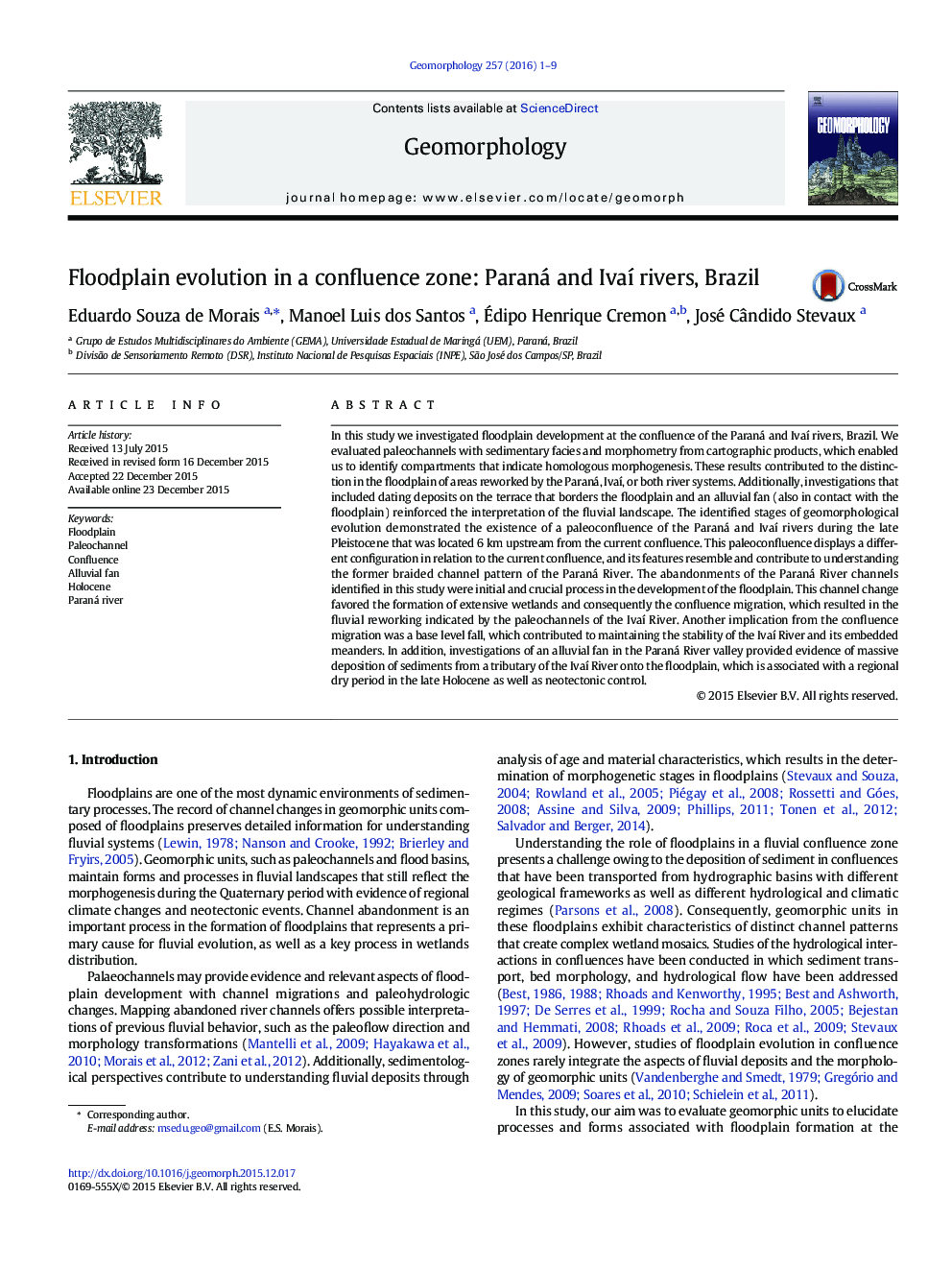| کد مقاله | کد نشریه | سال انتشار | مقاله انگلیسی | نسخه تمام متن |
|---|---|---|---|---|
| 6431629 | 1635392 | 2016 | 9 صفحه PDF | دانلود رایگان |

- Paleochannel orientations and sedimentary facies indicate homologous compartments.
- We identify a late Pleistocene confluence 6Â km at the upstream from the confluence.
- Channel changes caused the confluence migration and an extensive wetland.
- A late Holocene alluvial fan is associated with a regional dry period.
In this study we investigated floodplain development at the confluence of the Paraná and Ivaà rivers, Brazil. We evaluated paleochannels with sedimentary facies and morphometry from cartographic products, which enabled us to identify compartments that indicate homologous morphogenesis. These results contributed to the distinction in the floodplain of areas reworked by the Paraná, IvaÃ, or both river systems. Additionally, investigations that included dating deposits on the terrace that borders the floodplain and an alluvial fan (also in contact with the floodplain) reinforced the interpretation of the fluvial landscape. The identified stages of geomorphological evolution demonstrated the existence of a paleoconfluence of the Paraná and Ivaà rivers during the late Pleistocene that was located 6 km upstream from the current confluence. This paleoconfluence displays a different configuration in relation to the current confluence, and its features resemble and contribute to understanding the former braided channel pattern of the Paraná River. The abandonments of the Paraná River channels identified in this study were initial and crucial process in the development of the floodplain. This channel change favored the formation of extensive wetlands and consequently the confluence migration, which resulted in the fluvial reworking indicated by the paleochannels of the Ivaà River. Another implication from the confluence migration was a base level fall, which contributed to maintaining the stability of the Ivaà River and its embedded meanders. In addition, investigations of an alluvial fan in the Paraná River valley provided evidence of massive deposition of sediments from a tributary of the Ivaà River onto the floodplain, which is associated with a regional dry period in the late Holocene as well as neotectonic control.
Journal: Geomorphology - Volume 257, 15 March 2016, Pages 1-9